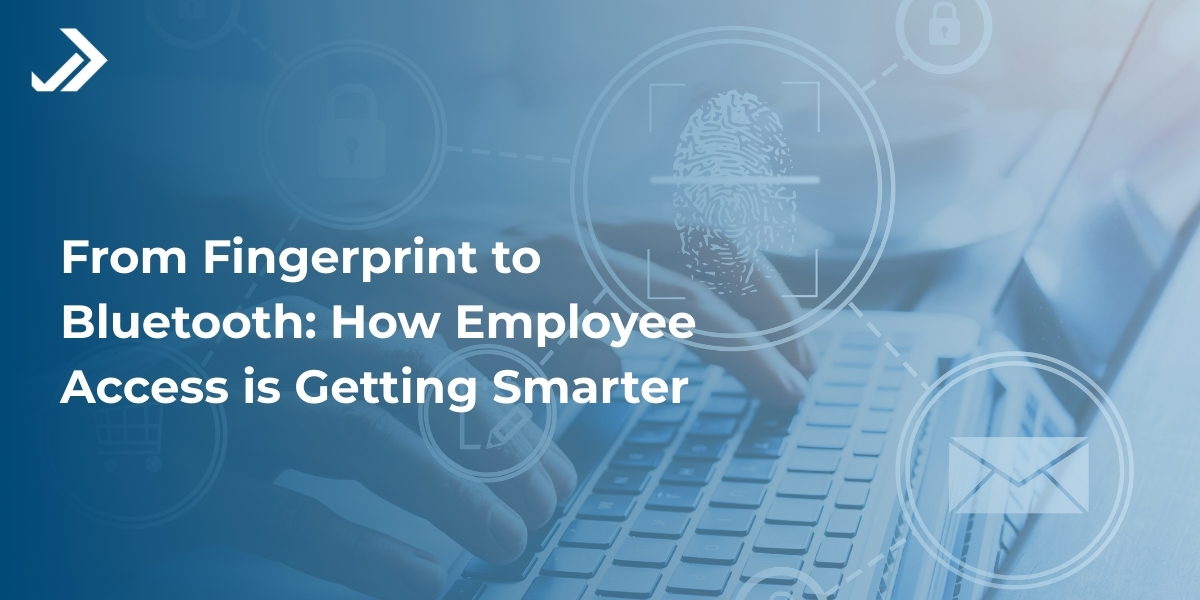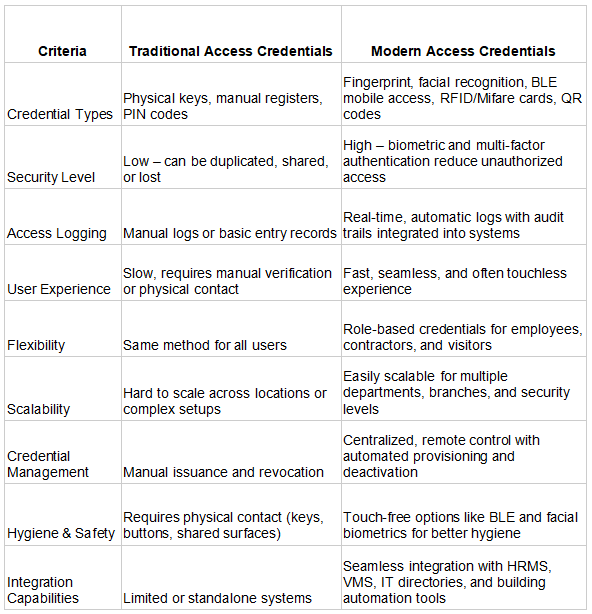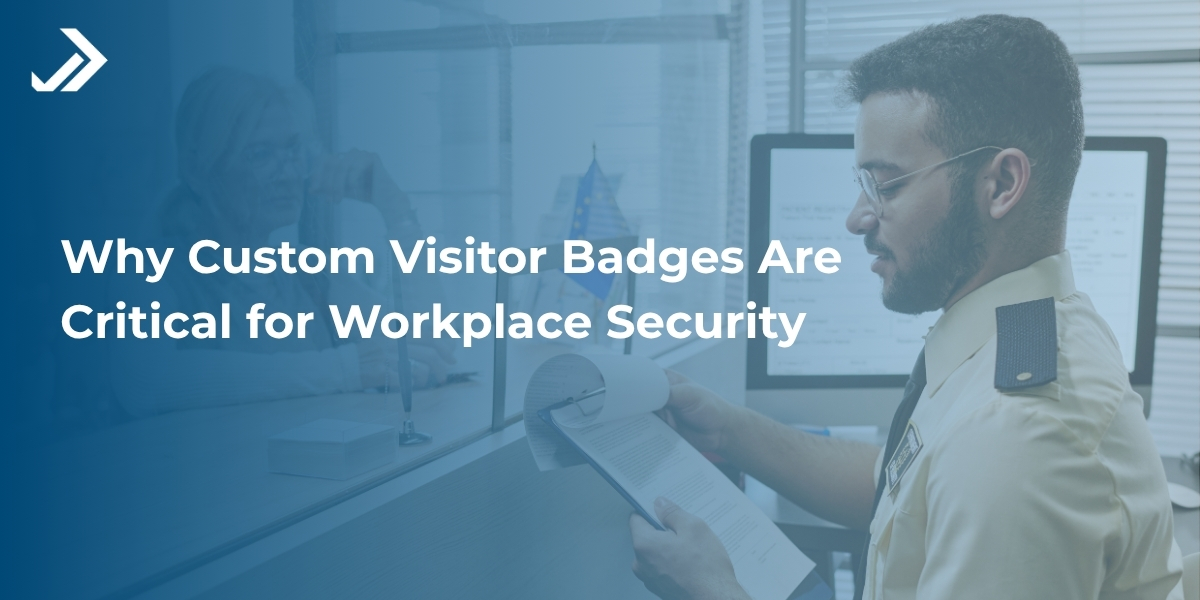

Author : Marketing Team | Follow us on LinkedIn:
30 Jul, 2025
From Fingerprint to Bluetooth: How Employee Access is Getting Smarter
Table of Contents
Keys are used to open doors. Now, your identity does!
In today’s digitally connected and hybrid-first world, employee access is no longer about just entering the workplace. It’s about how securely, efficiently, and intelligently that entry happens. From fingerprint attendance machines to Bluetooth-enabled mobile credentials, the access control system landscape is undergoing a silent revolution.
This evolution is reshaping how businesses secure their spaces, manage their workforce, and support modern work models. With rising cybersecurity risks and compliance pressures, enterprises are moving beyond static credentials to adopt biometric access control systems and multi-layered authentication methods that meet the demands of today’s dynamic workplace.
The Evolution of Employee Access Control: From Keys to Smart Credentials
A few decades ago, an access control system simply meant handing out a key. As workplaces grew more complex, manual registers, access cards, and PIN-based systems emerged to enhance visibility and control, but they often introduced new loopholes or inefficiencies.
Today, the landscape looks very different. A biometric access control system doesn’t just record who enters a building; it verifies identity using unique physical traits. With technologies like Bluetooth Low Energy (BLE), even smartphones have transformed into secure access tools. This leap toward multi-credential access control systems is vital not just for security, but also for flexibility, speed, and seamless integration across workplace technologies.
Traditional vs. Modern Access Credentials
Let’s take a moment to contrast the old with the new:

Static access models are being replaced by dynamic, role-based, and tech-enabled credentialing. The demand for flexible, contactless, and secure systems has never been higher.
The Range of Modern Employee Access Credentials
Modern access control systems offer diverse credentialing methods tailored to user roles and risk levels:
- Biometric Credentials:- Businesses now rely on biometric access control systems to authenticate individuals using physical traits such as fingerprints, facial recognition, or iris scans. Among these, the fingerprint attendance machine remains one of the most trusted tools, especially in manufacturing, logistics, and IT, where accurate time tracking and controlled access are critical.
- BLE Mobile Access:- Smartphones double up as access cards, leveraging BLE signals to unlock doors. This is popular in hybrid workspaces, allowing touchless entry and integration with smart office automation.
- RFID and Mifare Cards:- Common in corporate campuses, these encrypted cards are easily assigned and offer a balance between security and convenience.
- PINs and Passwords:- Still used for multi-factor authentication, especially in high-security zones.
- Barcodes and QR Codes:- Ideal for short-term access or visitor management, with fast digital issuance.
Why Multi-Credential Access Control Systems Are Gaining Traction
It’s not about adding complexity. It’s about enhancing security, convenience, and compliance:
- Stronger Security: Combining credentials (e.g., fingerprint + card) helps eliminate unauthorized entry and reduces the risk of misuse.
- Frictionless Entry: Touchless solutions expedite entry and eliminate bottlenecks, particularly in high-traffic areas.
- Flexibility: Admins can easily assign different credentials for full-time staff, contractors, and visitors.
- Audit-Readiness: Every entry is logged, supporting audits, compliance, and incident tracking.
BLE and Mobile Access: The New Norm
BLE technology is transforming the way organizations implement their access control systems. Smartphones now act as digital keys, offering a new level of convenience and safety.
Key Benefits:
- Touch-Free Entry: Boosts hygiene and employee safety.
- Unified Credentials: One device = multiple secure access points.
- Smart Integration: BLE-based access can be linked to elevator calls, lighting, or HVAC settings for a responsive workplace.
Real-World Applications of Smarter Credentials
Here’s how modern credential types, including biometric access control systems and BLE mobile passes, are helping organizations build secure and efficient workplaces:
Mixed-Use Office Spaces
Manage access for employees, contractors, and visitors using different credentials:
- Fingerprint attendance machines for full-time employees
- Mobile BLE credentials for contractors
- QR codes for guests and temporary visitors
This creates layered security without operational chaos.
High-Security Zones
Industries like finance, defense, or pharmaceuticals rely on multi-factor biometric access control systems. Combining fingerprints with RFID cards or PINs ensures only authorized personnel gain entry with complete traceability.
Hybrid and Remote Work Models
As employees transition between work environments, mobile-first access credentials provide seamless, location-independent entry, all managed centrally via a cloud-based access control system.
How to Build a Future-Ready Access Control System
Before investing in or upgrading your access control infrastructure, ensure it checks these essential boxes:
- Multi-Credential Support: Choose a system that supports BLE, RFID, PIN, and fingerprint attendance machines.
- Integration-Friendly: Your access control systemshould integrate seamlessly with HRMS, visitor management systems, and surveillance tools.
- Future-Proof: Look for platforms that support innovations such as AI-based access, behavioral analytics, and cloud-native control panels.
Final Thoughts
Access control is no longer just about opening doors. It’s about managing identities, ensuring safety, and enabling flexible work. With technologies like BLE and biometric access control systems, businesses are stepping into a smarter, more secure future of work.
Whether you’re upgrading from traditional cards or exploring fingerprint attendance machines for reliable time tracking, the right access control system is not just an operational tool — it’s a strategic asset.
Ready to upgrade your workplace security?
Discover how smarter access control can protect your people and empower productivity.








